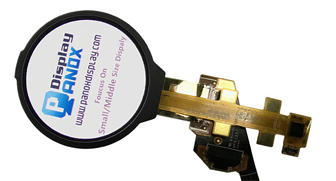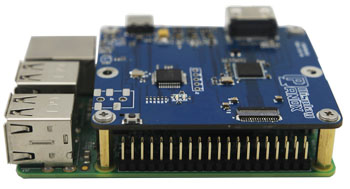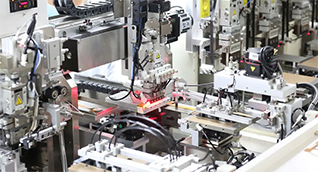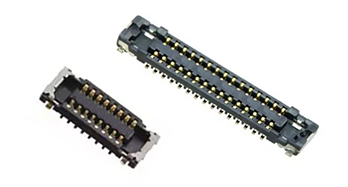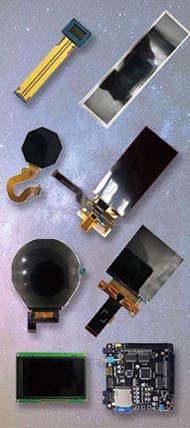OLED displays can generate some heat during operation, but generally, they run cooler than many traditional display technologies. However, factors like brightness level, device design, and manufacturer quality influence heat output. For factories, suppliers, or OEMs—especially in China—choosing the right OLED manufacturer like Panox Display is key to managing heat and ensuring product reliability. Also check: OLED
What Causes OLED Displays to Produce Heat?
OLEDs produce heat mainly from the electrical current passing through organic materials that emit light. Higher brightness levels and prolonged usage increase power consumption and heat generation. Although OLEDs are typically more energy-efficient than LCDs, heat can still affect performance without proper thermal management.
OLED panels often use thin materials that dissipate heat less effectively than thicker LCD layers, making careful design essential. For manufacturers and OEM suppliers in China, heat management influences quality control and warranty fulfillment.
How Do OLED Heat Levels Compare to Other Display Technologies?
OLEDs generally emit less heat than LCDs because they don’t require a backlight, which is a major heat source in LCDs. However, OLED displays can run warmer than e-ink or some LED displays under high brightness.
| Display Type | Heat Output Level | Reason |
|---|---|---|
| OLED | Moderate | Organic layers emit light directly but thin structure limits heat dissipation |
| LCD | Higher | Requires backlight that generates more heat |
| LED | Low to Moderate | Light-emitting diodes generate heat but often better dissipated |
| E-ink | Very Low | Passive display with minimal power consumption |
For China-based factories like Panox Display, this means optimizing production to enhance heat dissipation and overall product longevity.
Why Is Heat Management Critical in OLED Manufacturing?
Intense heat can degrade the organic compounds in OLEDs, causing image retention, burn-in, or accelerated aging. Proper heat management in manufacturing and materials selection ensures longevity and stable performance, particularly for wholesale suppliers and OEM clients demanding consistent quality.
Chinese factories such as Panox Display integrate advanced PCB design, thermal pads, and heat-spreader materials to minimize heat effects. Reliable thermal engineering protects manufacturing reputation and reduces costly returns.
Can OLED Heat Affect Different Applications?
Yes. Heat impact varies by use case. Wearables, automotive displays, and industrial applications need robust heat control due to continuous or high-brightness operation. For example, automotive OEMs require displays resistant to temperature variations and prolonged exposure to direct sunlight.
Manufacturers and suppliers in China offer tailored OLED solutions with enhanced thermal properties for demanding industries. Panox Display’s experience with automotive and military-grade OLEDs highlights the importance of heat resilience in specialized applications.
Which OLED Display Types Are More Susceptible to Heat?
Flexible and high-brightness OLEDs tend to heat up more than rigid or lower-brightness models due to their thin substrates and increased power consumption. Circular and micro-OLEDs designed by OEMs may face similar challenges.
Panox Display, as a professional Chinese OEM factory, carefully balances heat and brightness in such advanced OLED designs through material choices and customized thermal management.
How Do Chinese OLED Manufacturers Like Panox Display Address Heat Issues?
Panox Display employs multiple strategies:
-
Using premium panels from AUO, BOE, and Samsung with proven thermal profiles
-
Incorporating thermal spreaders and heat sinks in PCB assembly
-
Offering custom OLED designs optimized for heat dissipation for OEM clients
-
Running automated production lines that ensure consistent thermal testing and quality control
This approach enables Panox Display to supply reliable, high-performance OLEDs suitable for various industrial and commercial applications globally.
Where Can Businesses Find Reliable Wholesale OLED Suppliers in China?
Leading manufacturers like Panox Display in Shenzhen provide both standard and custom OLED solutions with strong heat management and quality assurances. As China’s OEM supplier with automated lines and 24/7 support, Panox Display supports startups to large enterprises seeking cost-effective and thermally stable displays.
When Should OEMs Consider Customized Thermal Solutions for OLED?
OEMs should invest in customized heat solutions when:
-
The OLED operates at high brightness or continuous duty cycles
-
The usage environment involves elevated ambient temperatures
-
The product’s reliability and lifespan are critical for client satisfaction
Panox Display offers tailored solutions, including custom cover glass and PCB thermal engineering, to meet these challenges.
Does OLED Heat Impact Energy Efficiency of Displays?
Yes, higher heat generation usually correlates with increased power consumption, reducing energy efficiency. By managing heat through optimized materials and manufacturing processes, factories reduce power waste and improve overall device efficiency.
Chinese suppliers like Panox Display emphasize combining energy efficiency with heat control to deliver superior OLED technology to B2B clients worldwide.
Panox Display Expert Views
"At Panox Display, we recognize that managing OLED heat is vital for maintaining performance, reliability, and client satisfaction in industrial and commercial applications. Our commitment to integrating premium-grade components and advanced thermal design gives our clients—especially OEMs and wholesale partners in China and abroad—a competitive edge. Leveraging automated, quality-controlled manufacturing, Panox ensures the OLED panels meet the highest standards for heat durability and efficiency, helping our customers succeed in diverse markets."
Conclusion
Managing OLED heat is essential for long-lasting, high-performance displays. Compared to other technologies, OLEDs produce moderate heat that requires smart design and materials choices. Chinese OEM factories like Panox Display lead in integrating thermal solutions, ensuring reliable products for wearable, automotive, industrial, and commercial applications. For B2B buyers and wholesale customers, partnering with experienced suppliers like Panox Display guarantees access to heat-optimized OLEDs backed by quality assurance and OEM customization.
Frequently Asked Questions
Is it normal for OLED displays to get warm?
Yes, OLEDs naturally produce some heat during operation, especially at high brightness, but effective design minimizes excessive warming.
Can heat damage OLED screens permanently?
Prolonged exposure to high heat can degrade OLED material, causing burn-in or reduced lifespan, so proper thermal management is critical.
How do Chinese OLED factories ensure product quality regarding heat?
Factories like Panox Display implement precise thermal tests, use premium materials, and integrate cooling layers to control heat during manufacturing.
Are flexible OLEDs more prone to heat issues than rigid ones?
Generally, yes, due to thinner substrates and higher power needs in flexible OLEDs, making heat control paramount in their design.
What benefits does Panox Display offer for OEM clients concerned about OLED heat?
Panox provides custom thermal solutions, high-quality sourcing, and automated production to deliver durable, heat-optimized OLED panels.











